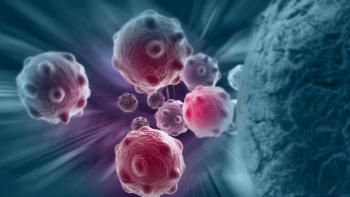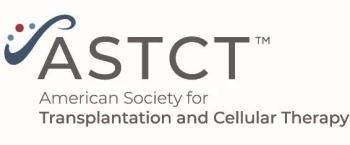
Mutations in Myelodysplastic Syndrome May Guide Clinicians on Optimal Therapy
Genetic profiling combined with clinical factors may help guide clinicians on how to better manage patients with myelodysplastic syndrome.
Genetic profiling combined with clinical factors may help guide clinicians on how to better manage patients with myelodysplastic syndrome (MDS).
New data
Scientists at Dana-Farber Cancer Institute and Brigham and Women's Hospital report that genetically profiling a patient's blood cells, and factoring in a patient's age and other factors, may be able to predict a patient's response to a stem cell transplant and help clinicians select the most effective combination of pretransplant therapies. The findings are based on an analysis of blood samples from 1,514 patients with MDS.
MDS is a family of diseases in which the bone marrow produces an insufficient supply of healthy blood cells and treatments vary depending on the specific type of MDS a patient has. Donor stem cell transplants are generally reserved for patients with a high risk of mortality with standard treatments.
“Although donor stem cell transplantation is the only curative therapy for MDS, many patients die after transplantation, largely due to relapse of the disease or complications relating to the transplant itself,”
The researchers report that the single most important characteristic of a patient's MDS was whether their blood cells carried a mutation in the gene TP53. The study showed that TP53 mutations were present in 19% of the patients and these patients tended to survive for a shorter time after a transplant, and also relapse more quickly compared to patients whose cells lacked the mutation. This was true whether patients received standard "conditioning" therapy (chemotherapy and/or radiation therapy) prior to transplant or received reduced-intensity conditioning (lower doses of these therapies). The researchers are now working on new strategies to overcome the challenges posed by TP53 mutations in MDS.
In patients age 40 and older and whose MDS didn't carry TP53 mutations, those with mutations in RAS pathway genes or the JAK2 gene tended to have a shorter survival than those without RAS or JAK2 mutations. In contrast to TP53 mutations, the adverse effect of RAS mutations on survival and risk of relapse was evident only in reduced-intensity conditioning. This suggested that these patients may benefit from higher intensity conditioning regimens.
The study also yielded key insights about the biology of MDS in specific groups of patients. The study demonstrated that one in 25 patients with MDS between the ages of 18 and 40 have mutations associated with Shwachman-Diamond syndrome, a rare inherited disorder that often affects the bone marrow, pancreas, and skeletal system. However, most of these patients had not previously been diagnosed with it. In each case, the patients' blood cells had acquired a TP53 mutation, suggesting not only how MDS develops in patients with Shwachman-Diamond syndrome, but also what underlies their poor prognosis after transplantation.
Newsletter
Stay up to date on recent advances in the multidisciplinary approach to cancer.

















































































